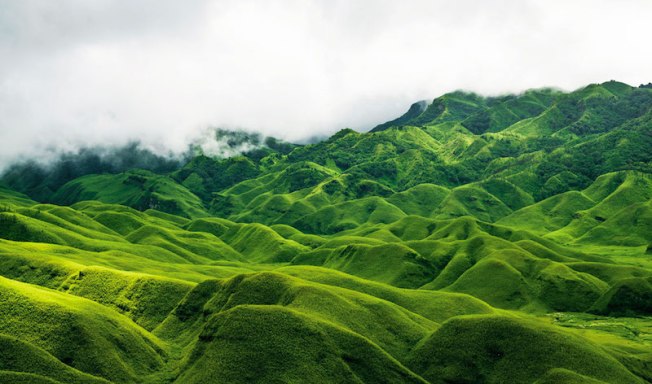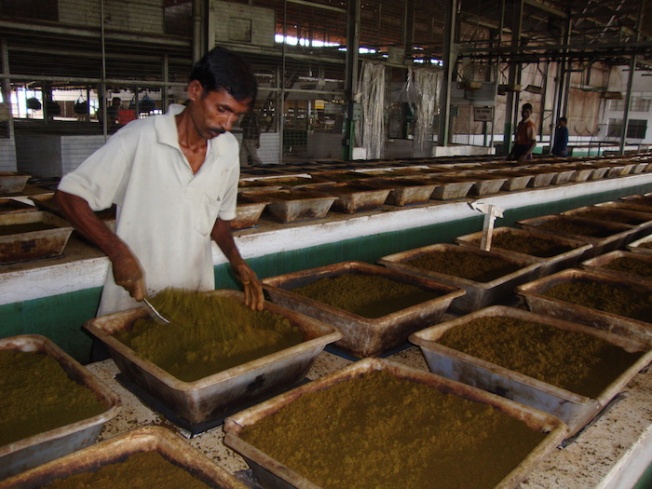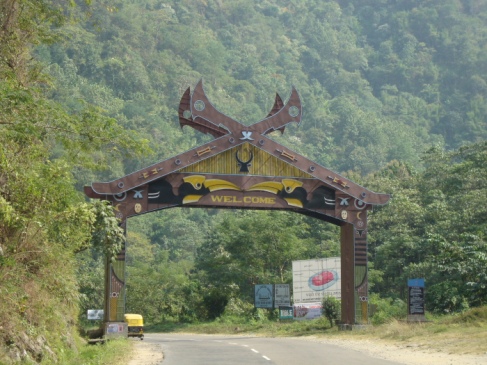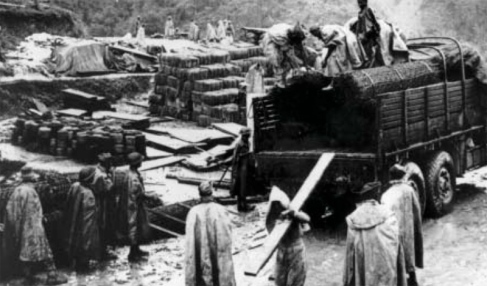ANURAG MALLICK and PRIYA GANAPATHY go off the beaten track in India’s North East to come up with some hidden gems

So you’ve done the Tibetan monastery trail from Tawang to Gangtok, the train ride on the DHR (Darjeeling Himalayan Railway), tea bungalow stays in Upper Assam, the orchids of Sikkim, wildlife safaris at Kaziranga, and now wonder if the Seven Sisters have anything else to offer. You’d be surprised that there are still a few secret nooks in India’s exotic North East that remain shy of the teeming masses.

Mechuka
Tucked away in the upper mountain folds of Arunachal’s West Siang district, Mechuka lies closer to the Chinese border than any town in India. Named after the hot springs in the area (men means medicine, chu is water while kha literally means snow or mouth), Mechuka is reached after a circuitous drive from Aalo. The Siyom or Yargyap chu river snakes across the wide plateau surrounded by an amphitheater of hills with bamboo bridges lined with Tibetan prayer flags. Being an advanced landing ground (ALG) for the Indian Army, you wake up to the sound of bagpipes and military drills as wild horses neigh in the fields. Before the road was built, the airstrip was the only access to the village. Stay at Nehnang Guest House and visit Tibetan monasteries like Samden Yongjhar gompa and Dorjeling gompa; the latter has a mud statue spanning two floors, besides the cave where Guru Nanak is believed to have meditated 500 years ago on his journey to Tibet.
Getting there: 180 km from Aalong (Aalo)

Damro
Located on the back road from Pasighat to Yingkiong, the tiny hamlet of Damro is home to the longest hanging bridge in Arunachal Pradesh swaying over the Yamne river. Surrounded by terraced fields is Yamne Eco Lodge, a cluster of thatched bamboo houses run by Oken Tayeng of Abor Country Travels & Expeditions. Hike 40 minutes to the bridge and encounter Adi Padam herders heading to the forests to tend to their mithun, a semi-domesticated bovine. Visit the original village of the Adi Padam tribe and get an insight into their unusual Donyi-Polo culture dictated by sun and moon worship. Watch sprightly men wield daos (machetes) with ease as women carry firewood or harvested crops in beyen (cane baskets). Try the local staple of smoked pork, lai (leafs), raja chili chutney, apong (rice beer) and if you are lucky, experience their local festivals like Sollung or Etor livened by song and dance.
Getting there: 74 km from Pasighat
Ph 9863553243 Email aborcountry@gmail.com www.aborcountrytravels.com

Nongriat
While Mawlynnong has gained much acclaim for its tag as the ‘cleanest village in Asia’ and its pretty living root bridge Jing Kieng Jri, Meghalaya has a huge wealth of natural wonders. At Nongriat, a deep descent from Laitkynsew down 2500 steep steps, past aquamarine pools set in a boulderscape, lies a double-decker bridge. It was shaped over centuries by entwining the fast growing aerial roots of the Ficus elastica tree. Every local passerby would spontaneously twirl new wiry tendrils around older ones, in keeping with an unwritten ancient code of strengthening the natural latticed structure over time. Dangling above a pretty pool, like a tiered necklace swinging in the tree canopy, Umshiang, the double-decker living root bridge, never fails to leave any visitor awestruck. Dip your feet in the pool for a natural fish spa with butterflies wafting around. If you are up for another hour of trekking, you can catch the Rainbow Falls, another major highlight in Nongriat. While there are pocket-friendly community-run guesthouses in Nongriat, Cherrapunji Resort in Laitkynsew is a good base. Run by Dennis Rayen, an old-timer in hospitality, he’s well versed in birding, local excursions and meteorological data of the region, displayed on the walls.
Getting there: Cherrapunji (called Sohra locally) is a 56km drive from Shillong
Cherrapunjee Resort, Laitkynsew www.cherrapunjee.com

Hoollongopar Gibbon Sanctuary
Named after the profusion of hoolong trees (Dipterocarpus macrocarpus) in the area, the Hoollongopar sanctuary is the only one in the country dedicated to the protection of India’s sole ape species, the Hoolock Gibbon. Surrounded by tea plantations and a railway line, this tiny pocket was once connected to larger tracts of forests in neighbouring Nagaland. Despite its shrinking habitat, the park is a good place to spot Hoolock Gibbons besides troupes of Stump-tailed Macaque, Assamese Macaque, Rhesus Macaque, Pig-tailed Macaque, Capped Langur and Bengal Slow Loris. There’s also a Forest Rest House where visitors can stay overnight and set out for an early morning nature trail. For a more luxurious stay, try Thengal Manor at Jalukonibari on the outskirts of Jorhat.
Getting there: 27km from Jorhat
Heritage North East Ph 18001239801 www.heritagetourismindia.com

Siiro
While Ziro has garnered much attention for its music festival, nearby Siiro leads a life of relative obscurity. The pretty little village is home to an organic farmstay called Abasa, run by a charming couple Kago Kampu and Kago Habung. Staying with an Apatani family helps guests gain insights into the centuries-old techniques of paddy cultivation of the fascinating tribe, recognizable by their facial tattoos and cane nose plugs. The facial mutilation was apparently done to deter raiding tribes from abducting the beautiful women! Stay on the 10-hectare farm growing kiwi, tomato, cabbage, babycorn and rice as you get a crash course on the paddy-cum-fish farming of the Apatanis. Fish and rice form the staple with unique dishes like suddu yo, a mixture of chicken mince and egg yolk cooked on fire in tender bamboo stems, dani apu komoh or kormo pila, a chutney made of roasted sunflower seeds, yokhung chutney made of Xanthallum berries, peeke, a dish of bamboo shoots, pork and tapiyo (local vegetarian salt made from charred lai or maize leaf which is their secret to being slim) besides the local brew apong, made of fermented millet and rice.
Getting there: Siiro is 3km from the old town of Hapoli near Ziro, district headquarters of Lower Subansiri, 118 km from the capital Itanagar via NH-229.
Ph 03788-225561, 94024 60483 Email abasahomestay@gmail.com

Dzukou Valley
Cradled between the borders of Manipur and Nagaland above 2000m, Dzukou Valley is an ecological haven that is home to the endemic Dzukou lily. Named dzukou or ‘soul-less and dull’ by disillusioned Angami ancestors after a disappointing harvest; others contend it means ‘cold water’ in the local dialect, ascribing it to the icy streams that run through it. The beauty of Dzukou Valley is unsurpassed, earning its more popular tag as the Valley of Flowers of the North East. Accessed by a tough hike across the Japfu Peak from the heritage village of Khonoma in Nagaland, the valley is a pristine paradise that attracts birders and trekkers alike. En route stop at the Khonoma Nature Conservation and Tragopan Sanctuary, set up to protect the endangered Blyth’s Tragopan. Khonoma is incidentally the country’s first green village where hunting and tree logging are strictly banned. Other access points are the villages of Viswema and Jakhama. Entry to Dzukou valley (Rs 50 for Indians, Rs 100 for foreigners) is paid at the Rest House, which also offers basic accommodation for a reasonable fee. A better option is staying at Meru Homestay in Khonoma run by Angami couple Krieni and Megongui who happily rustle up traditional Naga cuisine. Go on heritage walks around the 700-year-old village and listen to stories of valour in the land of headhunters.
Getting there: Khonoma lies 20km south west of Kohima which can be reached via NH39 from Dimapur, 74km away.
Ph Meru’s Homestay Ph 0370-2340061, Baby’s Homestay Ph 9436071046, Michael Megorissa local co-ordinator and guide Ph 9856125553

Kewzing
Overlooking snowy peaks of the Eastern Himalayas, Kewzing is a scenic village in Sikkim perched at 1700m and surrounded by cardamom fields and forested tracts. Hike to hot water springs in the area or head on walking trails to Doling, Barfung, Bakhim and Mambru villages, besides birdwatching trips to Maenam Wildlife Sanctuary and the monastery trail to Kewzing and Ravangla. The altitudinal variation between the Rangit river valley (350m) and the highest hill Maenam (3500m) harbours nearly 200 bird species, including the Satyr Tragopan and Fire-tailed Myzornis. Bon Farmhouse, a 6-acre family-run farm helmed by brothers Chewang and Sonam Bonpo is the perfect roost where farm produce like maize, buckwheat, finger millet, green peas, rice, wheat, potato, pumpkin, beans and lettuce is stirred up into delicious home-cooked meals. Fresh eggs and milk, butter, cottage cheese, curd and buttermilk from the farm’s Jersey cows also land up at the table. The forest abounds with wild edible foods and the monsoon adds seasonal delights like tusa (bamboo shoots), kew (mushrooms) and ningro (wild ferns). Try Sikkimese delicacies like kinama (fermented soyabean), gundruk (fermented spinach) and fisnu (stinking nettles). Enjoy a hot stone herbal steam bath in a dotho, infused with wild medicinal plants collected from the forest.
Getting there: 127 km from Bagdogra Airport
Ph +91 9735900165, 9547667788, 9434318496 www.sikkimbonfarmhouse.com
Authors: Anurag Mallick & Priya Ganapathy. This article appeared in The New Indian Express Indulge in December 2018.





















































